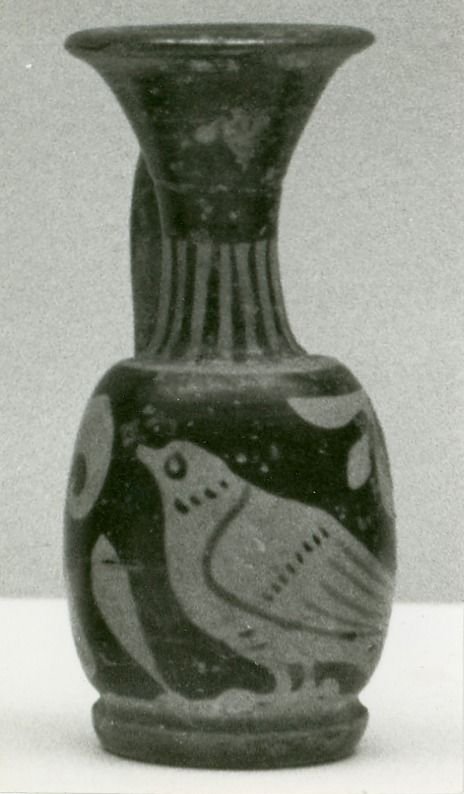
Apulian Red-Figure Lekythos (Oil Flask)
Classical Antiquities
| Date | second quarter of the 1st century A.D. |
|---|---|
| Object type | relief |
| Medium, technique | carved, Luna (Carrara) marble |
| Dimensions | 107.5 × 175 × 15 cm |
| Inventory number | 2000.24.A |
| Collection | Classical Antiquities |
| On view | Museum of Fine Arts, Basement Floor, Classical Antiquity, Hellas – Italy – Rome |
Among the 135 marble pieces acquired in 1908 and forming the core of the Collection of Classical Antiquities, two items consisting of several fragments were always given pride of place: the marble slabs connected to the 31 B.C. naval Battle of Actium, in which the later emperor Augustus defeated Antony and Cleopatra – an event that led to the establishment of the Roman Empire. In 2000, these slabs were joined by a third, complete one: this was the most significant acquisition by a Hungarian public collection since the First World War, largely made possible by the joint efforts of the state and numerous private sponsors. The relief, with several restorations and the original surface polish lost in the course of modern cleaning, displays part of a procession: a team of four slowly pacing horses pulls a two-wheeled parade-car (tensa) in the shape of a temple and decorated with relief scenes on the sides. Behind the car two men proceed, wearing togas and laurel wreaths, one of them carrying a branch of laurel. The scene is framed by undecorated borders at the top and the bottom. Since there is nothing framing the picture on the sides, and the figures extend over the edges, it seems certain that the slab formed part of a relief cycle. A series of drawings in the monumental work of Bernard de Montfaucon, Antiquité expliquée, which was one of the first encyclopaedias of classical antiquities published at the beginning of the 18th century, provided considerable help in reconstructing the cycle. According to the encyclopaedia, one part of the cycle shows scenes of a naval battle, while the others depict triumphal celebrations. One of the two slabs acquired in 1908 represents Apollo, to whom Augustus owed the victory, on the promontory of Actium, with details of ships visible in the foreground. The coherence of the complete slab and the fragments is also proved by the uniformity of the marble. The relief cycle may have adorned a sanctuary dedicated to the imperial cult. It is hard to tell, however, where it was found (there is equal evidence pointing towards Rome and Avellino in central Italy). Based on its style, the piece was most likely made during the early imperial period, under the reign of emperor Caligula (37–41 AD) or Claudius (41–54 AD). With its fusion of current politics and fictitious tradition elevated to history, the relief is a fine example of Augustan propaganda, instructive even today. The parade-car was used for transporting the sacred paraphernalia of the state gods from their Capitolium temple to the Circus Maximus in the procession (pompa circensis) following the triumphus of the victorious general, so that these too could take part in the festivities as representatives of the gods. The men behind the tensa are leaders of the Roman state, but the four horses are led by a goddess, Virtus Romana, the personification of Rome’s heroic virtue (only her left hand and the edges of her dress are visible in the relief). The temple-shaped superstructure of the chariot, with the sacred bird of Jupiter, the eagle, perching on its pediment, is decorated with scenes forming the focal points of the fictitious history of Rome. On one side, it is Aeneas, son of Venus and ancestor of the Roman people, fleeing the burning Troy with his father and son, and starting his odyssey to find a new home in Italy. He had to sail until finding the place marked, as the prophecy went, by a sow milking her piglets. On the other side, Romulus, the founder of Rome, appears with the triumphal trophy of the defeated enemy general in his hand. For contemporary viewers of the work, the two mythological subjects did not only recall the legends of their origin, but also resounded with current politics. The composition of the scene succinctly hints at the fact that the legendary history of Rome extends from Aeneas through Romulus to the Augustan present, and through the connection with the Actium victory of Augustus, himself appearing as the descendant of Venus, it also serves as a proof for the highest level of legitimacy for the new empire. Following ÁRPÁD MIKLÓS NAGY
Marble analyses have shown that the relief was made of Luna (Carrara) marble.
This record is subject to revision due to ongoing research.